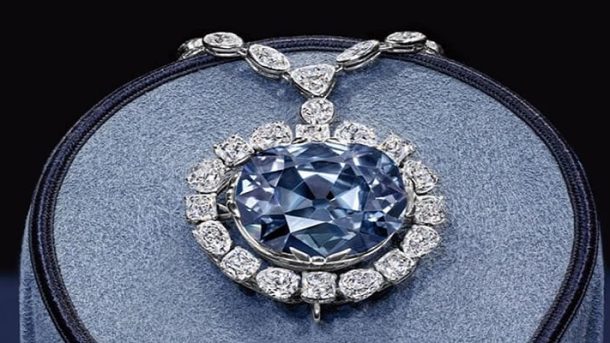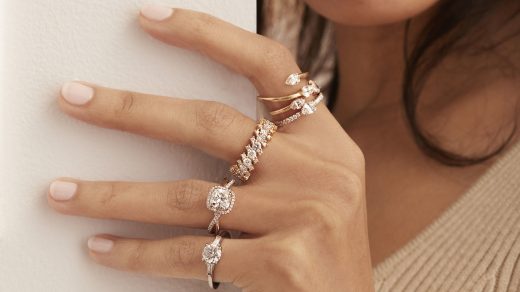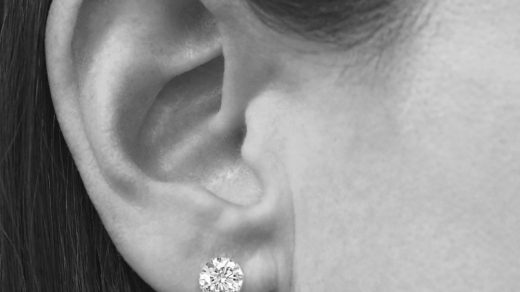In this article, we will be exploring a fascinating topic that will surely capture your interest: the most famous diamonds in the world. If diamonds have always intrigued you, then this is the perfect read for you. From the iconic Hope Diamond to the dazzling Pink Star, we will take a closer look at these rare and remarkable gems and discover the stories behind their fame. Whether you are a diamond enthusiast or simply curious about these magnificent jewels, this article will provide you with a fascinating insight into the world of diamonds and the awe-inspiring tales that surround them. So, grab your favorite beverage, sit back, and prepare to be amazed by the captivating allure of these extraordinary stones.

The Hope Diamond
History
The Hope Diamond is one of the most famous diamonds in the world, and its history is as captivating as its shimmering blue beauty. Believed to have originated from the Kollur mines in Golconda, India, the diamond made its way to Europe in the 17th century. It is believed to have been part of the French Crown Jewels during the reign of King Louis XIV. Over the centuries, the diamond changed hands multiple times, bearing witness to a plethora of historical events.
Famous Owners
Throughout its long and storied past, the Hope Diamond has been owned by several notable figures. One of its most famous owners was King Louis XIV of France, who possessed an impressive collection of diamonds. Later, the diamond made its way into the possession of King Louis XVI and Queen Marie Antoinette. However, it was ultimately sold during the French Revolution and disappeared for a while. Other owners of the diamond included the Hope family and the well-known jeweler Pierre Cartier.

Cursed Reputation
One of the reasons the Hope Diamond stands out among other diamonds is its reputation for being cursed. Legends surrounding the diamond claim that it brought misfortune and tragedy to those who possessed it. From tales of suicides and disinheritance to mysterious accidents and deaths, the diamond’s curse has captured the imagination of many. However, it is important to note that these stories are mostly rooted in folklore and superstition, rather than factual evidence.
Unique Characteristics
Aside from its rich history and reputed curse, the Hope Diamond boasts several unique characteristics. Weighing an impressive 45.52 carats, the diamond is renowned for its rare blue color, known as “Fancy Dark Grayish Blue.” Its unusual deep blue hue is attributed to the presence of boron within the atomic structure of the diamond. Additionally, the diamond exhibits a mesmerizing phosphorescence, which means it can emit a glowing light after being exposed to ultraviolet radiation. This remarkable trait further adds to the allure of the Hope Diamond.
The Cullinan Diamond
Discovery and Cutting
The story of the Cullinan Diamond begins in 1905 when it was discovered in the Premier Mine in South Africa. Named after the mine’s chairman, Thomas Cullinan, the diamond weighed an incredible 3,106 carats in its rough form. It was ultimately entrusted to the skilled hands of the renowned diamond cutting firm, Asscher Brothers in Amsterdam. After months of careful planning and precision cutting, the Cullinan Diamond was transformed into several magnificent gemstones.
The Largest Polished Diamond
One of the most remarkable aspects of the Cullinan Diamond is that it produced the largest polished diamond ever seen. Named the Cullinan I, or the Great Star of Africa, this breathtaking gem weighs a staggering 530.20 carats and is mounted in the head of the Sovereign’s Sceptre with Cross, part of the British Crown Jewels. The Cullinan II, also known as the Lesser Star of Africa, is an impressive 317.40-carat diamond that adorns the front of the Imperial State Crown.
Famous Jewelry Pieces
The Cullinan Diamond has played a significant role in various iconic jewelry pieces throughout history. King Edward VII’s wife, Queen Alexandra, wore the diamond as a brooch, named the Cullinan III, on many occasions. It has also been set in a pendant known as the Cullinan IV, worn by Queen Mary. Additionally, several other smaller pieces were crafted from the remaining Cullinan Diamond fragments, gracing the collections of royal families and museums around the world.
Current Ownership
After its initial discovery, the Cullinan Diamond was presented to King Edward VII as a symbolic gift. Today, the diamond and its remarkable gemstone derivatives remain part of the British Crown Jewels, symbolizing the grandeur and history of the British monarchy. The Cullinan Diamond’s enduring legacy serves as a testament to the skill of its cutters and the magnificence of the gem itself.
The Koh-i-Noor Diamond
Origin and Early History
The Koh-i-Noor Diamond, meaning “Mountain of Light” in Persian, has a rich and tumultuous history. Believed to have been mined in the Kollur mines of Golconda, India, the diamond found its way into the hands of various ancient and medieval rulers. Its early known possessor was the Kakatiya dynasty, and it later passed through the hands of the Delhi Sultanate and the Mughal emperors.
Imperial Symbol
As the Koh-i-Noor Diamond exchanged hands through conquest and alliances, it became a symbol of power and prestige for its possessors. It became part of the Mughal Peacock Throne and was later taken by various Persian rulers. In 1849, the diamond came into the possession of the British East India Company following the annexation of the Punjab region. It was subsequently presented to Queen Victoria as a symbol of British dominance in India.
Controversial Ownership
The ownership of the Koh-i-Noor Diamond has been a subject of controversy and diplomatic debates for many years. Over the centuries, India, Pakistan, Iran, and Afghanistan have all laid claim to the diamond, with each country asserting its historic rights to the gem. However, the diamond currently remains with the British Crown Jewels, and the Indian government has made efforts to request its return.
Mystical Legends
Like many famous diamonds, the Koh-i-Noor Diamond is steeped in mystical legends and tales. It is believed that the diamond carries a curse, which causes misfortune and tragedy for its male possessors. The stone’s curse is said to afflict only men while bringing good fortune to women who possess it. These stories, while captivating, should be taken with a grain of salt, as the true origins of the curse and its effects remain shrouded in mystery.
The Regent Diamond
Discovery and Acquisition
The Regent Diamond, also known as the Pitt Diamond, was discovered in the Golconda mines of India in the 17th century. Weighing an impressive 410 carats in its rough form, the diamond was acquired by Thomas Pitt, the Governor of Madras, in 1701. It was then sold to King Louis XV of France in 1717. The diamond’s exceptional quality and size quickly earned it a place of honor among the French Crown Jewels.
Under French Royalty
During its time under French ownership, the Regent Diamond was worn by several queens of France, including Marie Antoinette and Marie-Thérèse Charlotte. The diamond, renowned for its clarity and brilliance, epitomized the opulence and grandeur of the French monarchy. However, it was eventually seized during the French Revolution, along with many other royal jewels.
Napoleon Bonaparte’s Crown Jewel
The Regent Diamond’s fate took a fortunate turn when it came into the possession of Napoleon Bonaparte. Set in the hilt of his sword, the diamond became a symbol of his imperial power. Its significance was further underlined when Napoleon wore the diamond in the pommel of his coronation sword during his self-coronation as Emperor of the French in 1804.
Display at the Louvre
Today, the Regent Diamond is on display at the Louvre Museum in Paris, where it continues to captivate visitors with its exceptional beauty. Its remarkable clarity and size make it a true treasure of the French Crown Jewels. The Regent Diamond serves as a testament to the skill of the craftsmen who transformed a rough gem into a work of art fit for royalty.
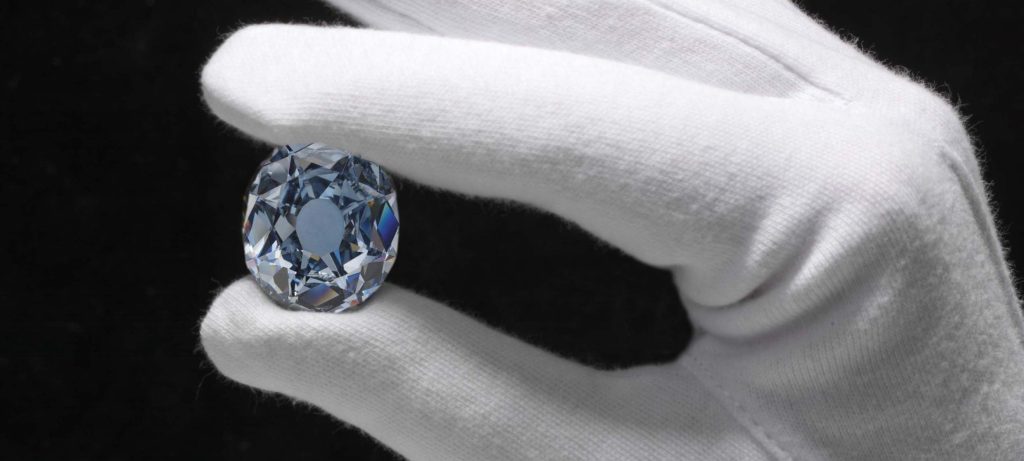
The Centenary Diamond
Unearthed in South Africa
The Centenary Diamond is one of the largest and most exceptional diamonds ever discovered in South Africa. Unearthed in 1986 at the Premier Mine, the same mine that yielded the Cullinan Diamond, the Centenary Diamond weighed a remarkable 599 carats in its rough state. This magnificent gemstone captured the attention of diamond experts and enthusiasts alike due to its exceptional quality and size.
Superb Cut and Clarity
What sets the Centenary Diamond apart is not only its size but also the craftsmanship and precision involved in its cutting process. Boasting a total of 247 facets, including 164 on the stone and 83 on the girdle, the Centenary Diamond achieved a level of cutting precision unparalleled at the time. Its flawless clarity further enhances the diamond’s breathtaking beauty, ensuring its rightful place among the world’s most remarkable gemstones.
Unique Optical Properties
Beyond its impressive size and exceptional cut, the Centenary Diamond possesses unique optical properties that add to its allure. When exposed to ultraviolet light, the diamond emits a red fluorescence, which intensifies its mesmerizing brilliance. This remarkable phenomenon is a result of the specific arrangement of atoms within the crystal lattice structure of the diamond. The Centenary Diamond’s optical properties make it a true wonder in the world of diamonds.
Famous Diamond Jewelry
The Centenary Diamond has been the centerpiece of several notable jewelry pieces. One such creation is the Centenary Diamond Necklace, which features the diamond surrounded by smaller diamonds, emphasizing its brilliance. Moreover, the Centenary Diamond has become a source of inspiration for jewelry designers worldwide, who seek to capture its timeless elegance and extraordinary beauty in their creations.
The Orloff Diamond
Eastern Origins
The Orloff Diamond traces its origins back to the Golconda mines in India. Believed to have been discovered in the early 18th century, this extraordinary gemstone is rumored to have adorned a sacred statue in a temple near the city of Trichinopoly. It is said that a French soldier named Jean-Baptiste Tavernier acquired the diamond and sold it to Russian Empress Catherine the Great in 1774.
Belonged to Russian Royalty
After its acquisition by Catherine the Great, the Orloff Diamond became part of the Russian Crown Jewels. The diamond was set in the Imperial Sceptre, a symbol of imperial power and authority. Later, it was also incorporated into the imperial regalia, adorning the Imperial Crown during important state occasions. The diamond’s association with Russian royalty further enhanced its significance and allure.
The Eye of Brahma Legend
The Orloff Diamond is enveloped in an intriguing legend known as “The Eye of Brahma.” According to the tale, the diamond was plucked from the eye of a Hindu god statue by a thief who then concealed it within a wound to steal it. The wound supposedly infected and killed the thief, perpetuating the belief in the diamond’s curse and the power it held. Although mostly a work of fiction, the legend adds to the mystique surrounding this remarkable gem.
National Treasure of Russia
Following the Russian Revolution, the Orloff Diamond was stored in the Kremlin Diamond Fund. Today, it remains a part of Russia’s national treasure, occasionally displayed for public viewing. The exceptional size and pristine quality of the Orloff Diamond continue to captivate those fortunate enough to catch a glimpse of this extraordinary gemstone.
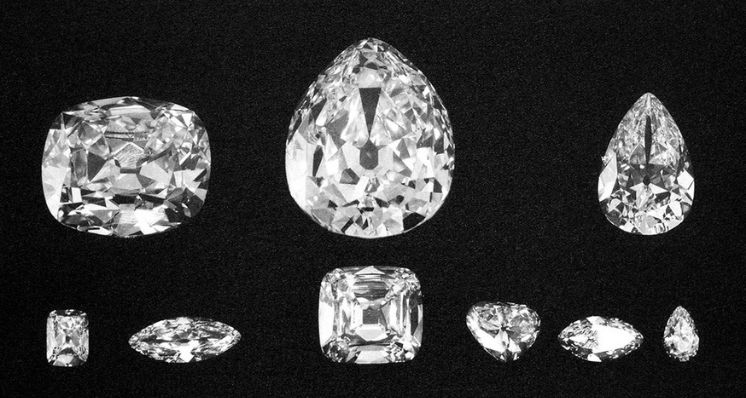
The Tiffany Yellow Diamond
Discovery and Cutting
The Tiffany Yellow Diamond, esteemed for its remarkable size and vibrant color, was discovered in the Kimberly Mines of South Africa in 1877. Weighing an impressive 287.42 carats in its rough form, the diamond was sent to renowned gem cutter George Frederick Kunz at Tiffany & Co. in New York. After months of skilled craftsmanship, the diamond was transformed into its present form, weighing 128.54 carats.
Extraordinary Yellow Color
What distinguishes the Tiffany Yellow Diamond is its extraordinary yellow color, unparalleled in its intensity and depth. This pure yellow hue is the result of trace amounts of nitrogen present within the diamond’s carbon structure. The flawless color saturation of the diamond contributes to its timeless beauty, making it one of the most sought-after yellow diamonds in the world.
Famous Jewelry Pieces
Over the years, the Tiffany Yellow Diamond has been the centerpiece of numerous iconic jewelry pieces. One such creation is the Bird on a Rock brooch, designed by Jean Schlumberger for Tiffany & Co. The brooch features the yellow diamond perched atop a cluster of white diamonds, showcasing the exceptional craftsmanship and elegance associated with Tiffany & Co.
Prominent Display at Tiffany & Co.
The Tiffany Yellow Diamond has held a prominent position within the esteemed collections of Tiffany & Co. The diamond is not only a testament to the brand’s passion for remarkable gemstones but also a shining example of their dedication to exceptional craftsmanship. Visitors to Tiffany & Co. are greeted with the awe-inspiring beauty of the Tiffany Yellow Diamond, a timeless symbol of luxury and elegance.
The Great Mogul Diamond
Legendary Past
The Great Mogul Diamond, also known as the Orlov Diamond, has a legendary history that dates back to the 17th century. Believed to have been mined in India, the diamond’s exact origin and early ownership remain uncertain. It is said to have once adorned the Peacock Throne of the Mughal Emperor Shah Jahan, the visionary behind the iconic Taj Mahal.
Ownership Disputes
As with many famous diamonds, the ownership of the Great Mogul Diamond has been the subject of disputes and controversies. The diamond changed hands numerous times between Indian rulers, Persian conquerors, and European nobility. However, due to conflicting accounts and limited historical records, the true lineage of ownership remains veiled in mystery.
Possible Recut and Repolishing
The exact fate of the Great Mogul Diamond remains unknown, and some suggest that it may have undergone recutting and repolishing. The diamond is believed to have weighed an astonishing 787 carats in its rough form. However, after potential alterations, the diamond’s current whereabouts and size remain unknown. Speculation surrounds its possible division into several smaller diamonds or its recut into a different shape.
Current Whereabouts
Despite the mysterious circumstances surrounding the Great Mogul Diamond, it continues to captivate the imagination of diamond enthusiasts and historians alike. The diamond’s current whereabouts remain unknown, leaving room for speculation and further study. Whether divided or reworked, the legacy of the Great Mogul Diamond continues to spark curiosity and admiration for its remarkable past.
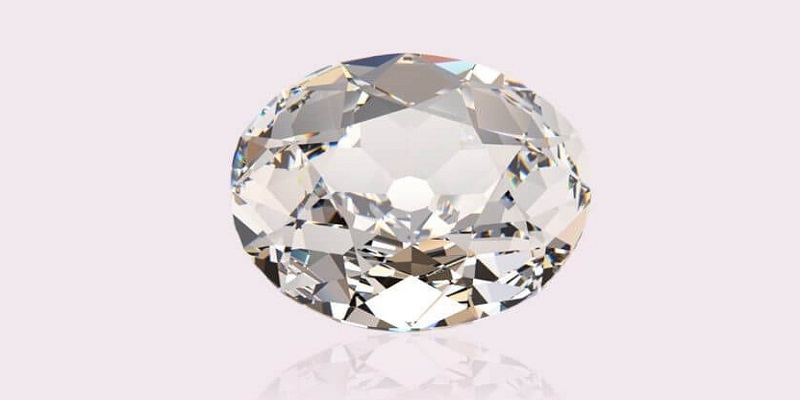
The Dresden Green Diamond
Distinctive Green Color
The Dresden Green Diamond stands out among its brilliant counterparts due to its unique green color. With a weight of approximately 41 carats, this historic gemstone is one of the largest and finest natural green diamonds ever discovered. Its vibrant, grassy green hue is said to be a result of naturally occurring radiation exposure over millions of years.
History as a Royal Gem
The Dresden Green Diamond’s history dates back to the 18th century when it first appeared in the treasury of the Elector of Saxony. It was later named the “Dresden Green” due to its association with the city. As a symbol of wealth and status, the diamond was often set in various ceremonial items, such as the hat decoration of the State Crown of Saxony.
Protection During World War II
During World War II, to safeguard the valuable treasures of the Green Vault treasury, the Dresden Green Diamond, along with other precious gems, was moved to a secure location. Despite the extensive destruction caused by the bombing of Dresden, the diamond survived unscathed. Its resilience and enduring beauty have made it an emblem of hope and strength in the face of adversity.
Exhibited at the Green Vault
Today, the Dresden Green Diamond is on display at the Green Vault in Dresden, Germany. This museum showcases an extraordinary collection of rare and valuable treasures, including the diamond. Visitors have the opportunity to witness the breathtaking beauty and exquisite craftsmanship of this historic gemstone, appreciating its rarity and the rich history it represents.
The Blue Moon Diamond
Unearthed in South Africa
The Blue Moon Diamond, originally known as the Blue Moon of Josephine, was discovered in the Cullinan Mine in South Africa in 2014. Weighing an impressive 29.6 carats in its rough form, the diamond captivated experts with its extraordinary blue color. This rare find marked a significant moment in the world of diamonds, as blue diamonds are among the rarest and most coveted gemstones.
Rare Blue Color
What makes the Blue Moon Diamond truly remarkable is its exceptional blue color. The diamond belongs to the coveted “Fancy Vivid Blue” category, exhibiting an intense hue that is a result of the presence of boron within its crystal structure. This intense blue, often described as unparalleled in its beauty, adds to the diamond’s allure and contributes to its extraordinary value.
Record-Breaking Sale
In 2015, the Blue Moon Diamond made headlines when it was sold at auction for a record-breaking price of over $48 million. The exceptional quality, rarity, and ethereal beauty of the diamond drew the attention of eager bidders from around the world, resulting in a fierce bidding war. Ultimately, the diamond found a new owner who recognized its unparalleled value and unique magnificence.
New Name: The Blue Moon of Josephine
Following its sale, the Blue Moon Diamond earned a new name: the Blue Moon of Josephine. This name honors the daughter of the buyer, who is believed to have been the inspiration behind the purchase. The newly named diamond remains a symbol of extraordinary beauty and exceptional rarity, a testament to the wonder and allure of the world’s most famous diamonds.
In conclusion, the world’s most famous diamonds tell captivating stories of discovery, ownership, and extraordinary beauty. From the cursed reputation of the Hope Diamond to the exceptional size and cutting precision of the Cullinan Diamond, each gemstone holds a unique place in history. Whether they are shrouded in legends and mystique like the Koh-i-Noor Diamond or revered as national treasures like the Orloff Diamond, these remarkable gemstones continue to leave a lasting impression on those fortunate enough to admire them. From the famed Tiffany Yellow Diamond to the legendary Great Mogul Diamond, each diamond possesses its own distinctive characteristics, representing the pinnacle of rarity and elegance. These extraordinary gemstones serve as timeless reminders of the remarkable beauty that lies within the earth, captivating our hearts and minds for generations to come.
© 2022-2023 by diamondstudsource. All rights reserved. No part of this document may be reproduced or transmitted in any form or by any means, electronic, mechanical, photocopying, recording, or otherwise, without prior written permission of diamondstudsource.com.

